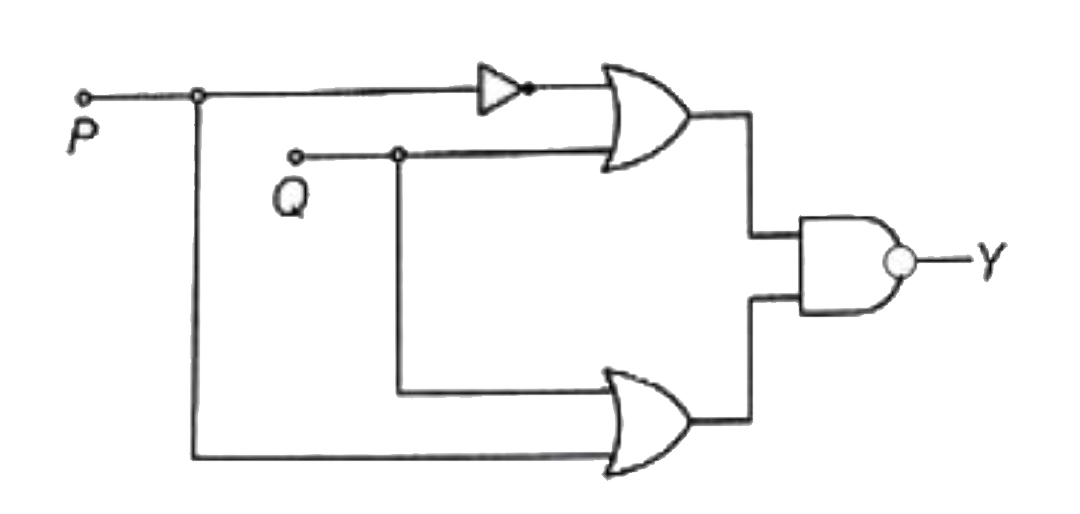The Boolean expression P+¯¯¯PQ, where P and Q are the inputs of the logic circuit, represents
A
AND gate
B
NAND gate
C
NOT gate
D
OR gate
Video Solution
Text Solution
The correct Answer is:D
We draw a truth table for the expression P+¯¯¯P.Q as given below
∣∣
∣
∣
∣
∣
∣∣PQ¯¯¯P¯¯¯P.QP+¯¯¯¯¯¯¯¯P.Q00100011111000111001∣∣
∣
∣
∣
∣
∣∣
We note that output is 1 when either of the input is 1. Thus the logic circuit works as OR gate.
|
Topper's Solved these Questions
- ELECTRONIC DEVICESBOOK - PRADEEPCHAPTER - ELECTRONIC DEVICESEXERCISE - LONG QUESTION ANSWER
2 Videos
- ELECTRONIC DEVICESBOOK - PRADEEPCHAPTER - ELECTRONIC DEVICESEXERCISE - PROBLEMS FOR PRACTICE
7 Videos
- ELECTRONIC DEVICESBOOK - PRADEEPCHAPTER - ELECTRONIC DEVICESEXERCISE - HIGHER ORDER THINKING SKILLS
1 Video
- ELECTROMAGNETIC WAVESBOOK - PRADEEPCHAPTER - ELECTROMAGNETIC WAVESEXERCISE - II Focus multiple choice question
5 Videos
- ELECTROSTATICSBOOK - PRADEEPCHAPTER - ELECTROSTATICSEXERCISE - ASSERTION-REASON TYPE QUESTIONS
2 Videos
Similar Questions
Knowledge Check
The Boolean expression
~ (p∨q) is equivalent to :ApBqC~qD~pThe boolean expression ~(p⇒(~q)) is equivalent to
Ap∧qBq⇒~pCp∨qD(~p)⇒qThe Boolean expression ~(p∨q)∨(~p∧q) is equivalent to :
ApBqC~qD~p
The Boolean expression ~(p⇒(~q)) is equivalent to:
View SolutionThe Boolean expression (p∧q)∨((−q)∨p) is equivalent to
View SolutionThe Boolean expression ~(p∨q)∨(~p∧q) is equivalent to-
View SolutionIn the given circuit P and Q from the inputs. The output Y is

View SolutionIf the boolean expression ((p∧q)∨r)⇒(p∧r) is false, then which of the following cannot represent ordered truth values of (p,q,r) ?
View Solution